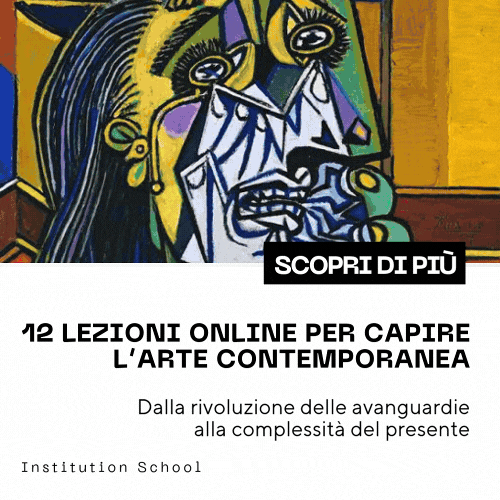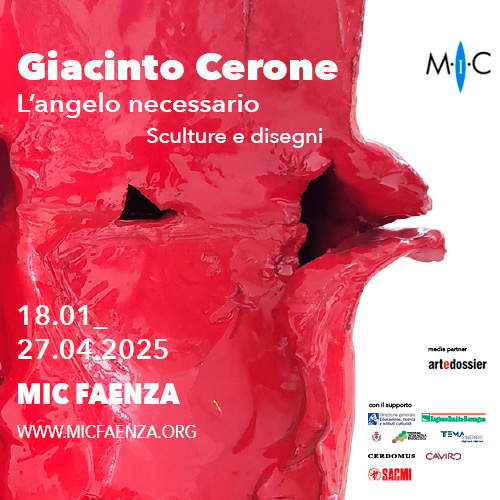What the dark Rome of the 1980s was like. Interview with Dino Ignani
A few months ago, an important selection of the Dark Portraitscycle by Dino Ignani (Rome, 1950), one of Italy’s greatest photographers, became part of the collections of the Capitoline Superintendency of Roma Capitale. This important nucleus is on display at the Museo di Roma in Trastevere where, until January 12, 2025, there is an exhibition entirely dedicated to this cycle of portraits, dedicated to the young people who animated Roman nightlife in the 1980s and in particular to the dark. The dark culture was not ascribable to a single musical trend but was linked above all to the way of dressing, in particular to the color black, which took on an entirely new symbolic value. Ignani has been following this phenomenon for a long time and no other photographer like him in Italy has been able to observe, study, and experience the dark movement. On the occasion of this important acquisition, we interviewed Dino Ignani to take a closer look not only at his works, but also at that same movement that his Dark Portraits seek to restore to the viewer. The interview is by Federico Giannini.
FG. If you had to sum up dark culture in a few words, how would you do it?
DI. Freedom of thought and creativity.
Who were the dark people who frequented Rome in the 1980s? And why was there such a high attendance of goths in Rome?
Some of the boys and girls who identified with the “dark” community came from the suburbs, from the hinterland, some from the Castelli but also from more affluent backgrounds; it was yes a very popular, proletarian phenomenon but it was also transversal and totally inclusive. I don’t know why in Rome the “dark community” was very substantial ... probably because the metropolitan area is very large and branched and has a large number of inhabitants compared to other cities. However, there were also important dark realities in Florence and Milan.
What were the landmark venues, the singers and bands they listened to, the books they read?
The first venue to connote itself as dark was the Black Out, which on Fridays began to offer evenings with, precisely, dark music. Then other venues, without overlapping, also started to have evenings with DJs mixing music from mostly dark bands but also new wave, post-punk, neo-psychedelic, electronic. I try to remember: on Mondays we went to X-Club, on Tuesdays to Supersonic, on Wednesdays to Olympus, on Thursdays to Blue Angel, on Fridays precisely to Black Out, on Saturdays to Uonna Club, and the week ended on Sundays to Piper. I also remember video bars: the Venice, the Blu Bar... Apart from the Roman groups that were formed then and had the opportunity to play in various spaces and especially at the Espero cinema that organized music reviews; the most beloved groups were beloved The Cure, The Cult, Joy Division, Dead can dance, Bauhaus, Sisters of mercy, Siouxsie and the banshees, The Damned, This Mortal Coil and others. I never got to talk to them about the books they liked.



Were there instead artists, I mean visual arts artists, who were reference points for the Roman dark scene?
Yes, many of them were creatives: some played in musical groups; others created clothes or accessories; some had created cultural associations so that they could organize theatrical performances that included disguise, singing, gestures and acting; there were those who used painting on large cloths or sheets that were used as backgrounds for performances or musical groups...
What was the nonconformity of the 1980s goths expressed in? Was it a rebellion against society, against politics, or was it a way of standing out, or was it a combination of all these?
It was expressed in different ways. Meanwhile, by choosing an aesthetic form in total break with the dictates of the fashion of the time. The clothes were codes of language and amounted to an existential manifesto, a flag. A form of activism carried through with the look and with ideas at odds with the clichés imposed by the various previous trends, for example, the eskimo, the real tolfa bags, the Dutch clogs, the flared pants that connoted leftist boys and girls; or the choices of punk boys and girls that consisted of torn clothes, ragged pants, large chains, studded collars and nails, the use of piercings in various parts of the face was common, and many ostentatious tattoos...
Where did your fascination with this youth culture come from?
It was 1981, I frequented a wine bar in Trastevere called Il Fidelio, a classic hangout for artists, layabouts, chatterboxes of various kinds... You would meet there at the beginning of the evening without any appointment and stay until closing time. At some point, the typical club fauna was joined by the goths. There were about ten of them, very young: between 18 and 22 years old. I was much older than them, by about ten years, and I knew nothing about dark music. I had already been photographing for five years and preferred doing portraits: these guys immediately intrigued me. I began to ask and become familiar with them, and so I decided to follow them to the clubs they frequented to figure out how I could take pictures. One shot each, in corners that were made available to me by the club managers themselves. From there an archive of about 450 images was born, which later became Dark Portraits.





In what way did you want to depict this scene with your Dark Portraits?
Many of the photographs were made by setting up a minimal photographic set: camera on a tripod, stand with a photography umbrella and a 1000-watt continuous light lamp. In other circumstances, for example during performances, I chose to use hand-held camera and flash. Mostly I used black/white film and partly color slide film.
Why the choice to prepare ad hoc sets for these portraits?
Because the lighting in nightclubs is very poor, and if I had photographed without the aid of a tripod and lamp, the photographs would have turned out completely blurred and probably out of focus.
The Dark Portraits are in black and white, although you have also often worked with color in your career. What motivated the choice of black and white?
In those days-and for twenty-five years-I developed the rolls and printed the photographs at home, and this process was only possible with black-and-white film; film-both color and slide-was very complicated to process in-house.
Who were the young people who posed for you? Do you remember any of them in particular?
At the beginning, when I started following them in the discos and photographing them I knew only a few of them whom I had met at Fidelio and with whom I had started the first contacts then, hanging out with them on the many nights, with many of them friendships confidences were established... Even now with several of them we are in relationship, we see each other from time to time, or we are in contact through social networks.
You have known many protagonists of the Rome of the 1980s and beyond (I remember in particular your portraits of Valentino Zeichen, one of the greatest Italian poets of recent decades). Are there any of these personalities to whom you feel particularly close, or whom you remember with pleasure?
With many of the poets and artists I photographed a friendship was born, I meet them at presentations of their books, at readings at festivals. Unfortunately, some of them are no longer here; I am thinking precisely of Valentino Zeichen, Biancamaria Frabotta, Carlo Bordini, Patrizia Cavalli, Vito Riviello, Anna Cascella Luciani, Jolanda Insana, Giovanna Sicari...



Is there a legacy left by the dark scene that perhaps still reverberates today? Or is it all gone and those are times that will never return?
Those years will never return in that exact form because obviously society and conditions have changed. Still there remains a “legacy of thought” albeit exercised in other forms, there remains the musical legacy taken up by so many current bands and also the aesthetic fascination. It is no accident that many fashion magazines write about gothic as a contemporary trend.
Do you see, in today’s youth cultures, anything reminiscent of those times, or any similarities, any common traits?
Today the ways of coming together and managing relationships have changed. But those who share ideals of free thought and progress will always exist even if with different distinctive traits from the dark of those years.
A corpus of his Dark Portraits has been acquired by the Museum of Rome in Trastevere. His portraits of the dark, therefore, now become common heritage, the heritage of Romans. How, in your opinion, do the portraits of the dark people of the 1980s, and in general the dark scene in Rome at that time, contribute to making us better acquainted with Rome, its greatness, and its contemporary (and not) culture?
I really wouldn’t know what to answer to this question, I ignore what the connection, the relationship, the relationship between those boys and girls of that time - now adults - and the social and cultural fabric of today might be. But I observe in amazement that the exhibition intrigues many young and even very young visitors; they ask me questions, take pictures of the images displayed in the exhibition, and take pictures of themselves in front of them...
Warning: the translation into English of the original Italian article was created using automatic tools. We undertake to review all articles, but we do not guarantee the total absence of inaccuracies in the translation due to the program. You can find the original by clicking on the ITA button. If you find any mistake,please contact us.





























